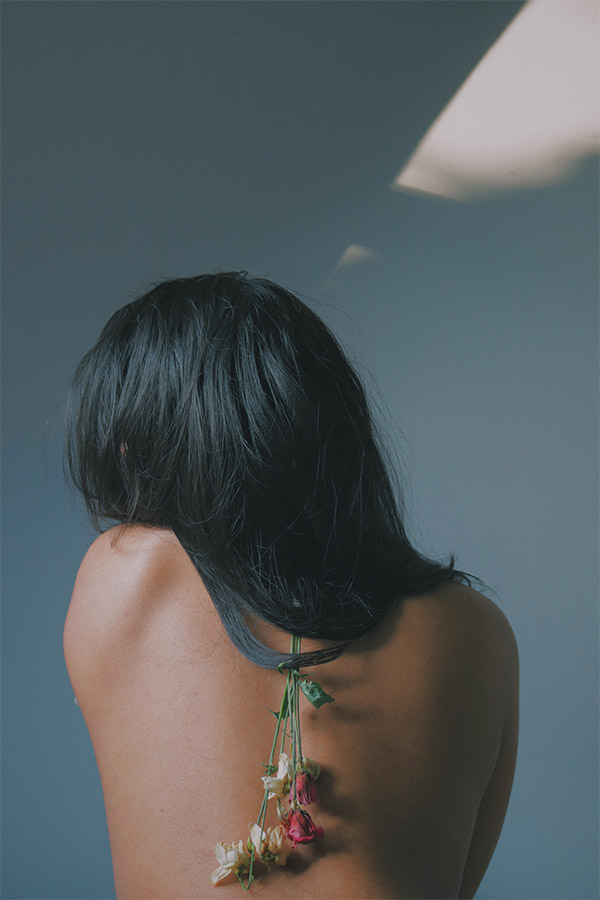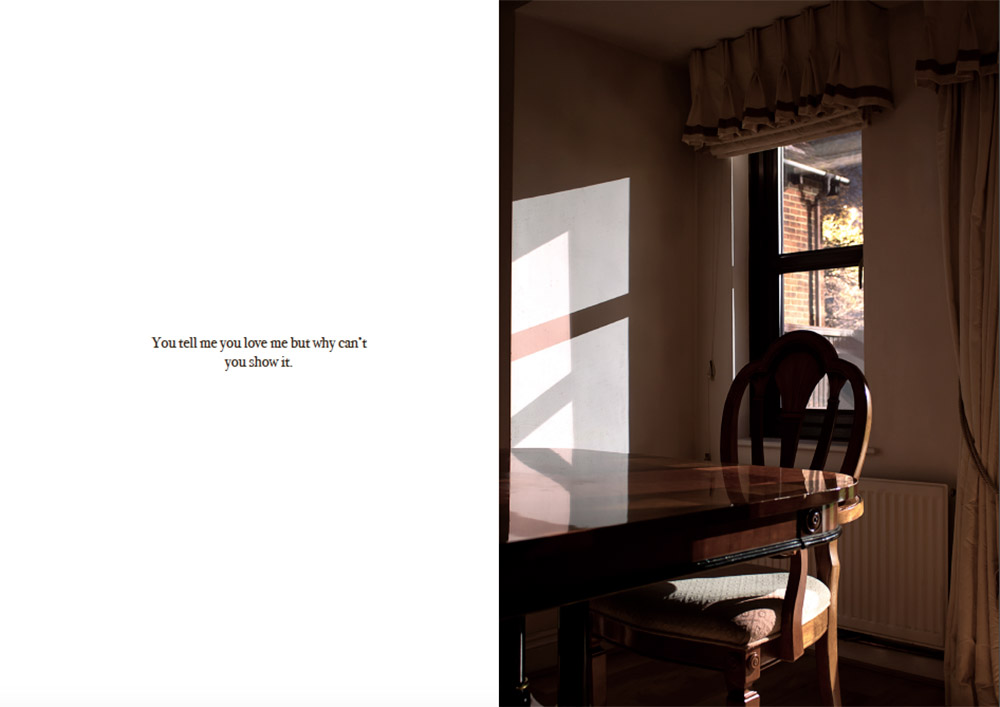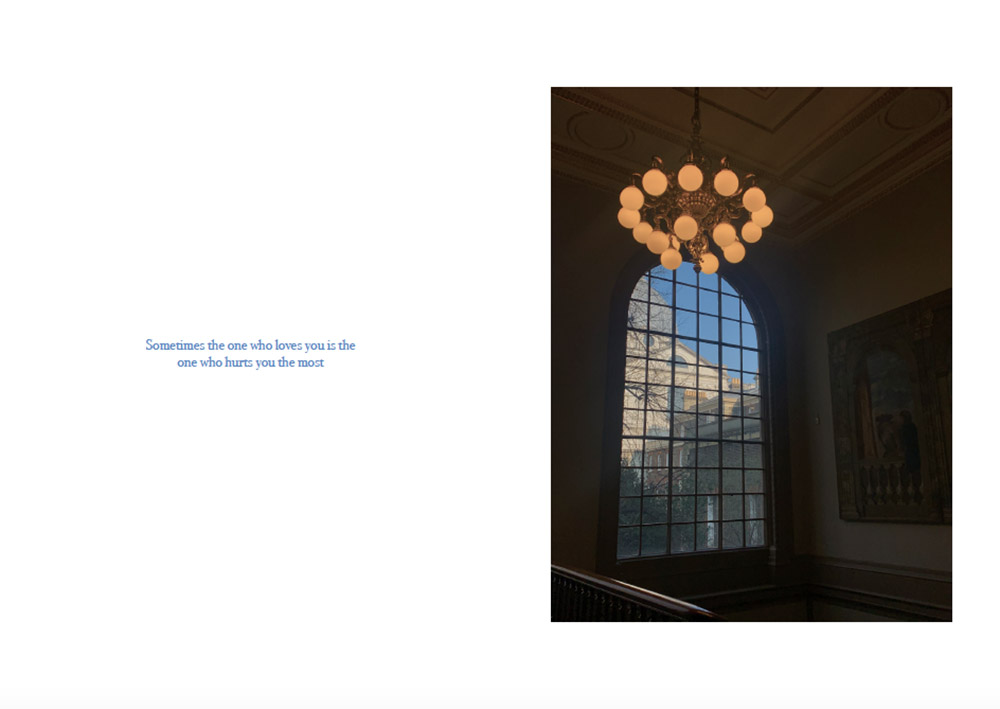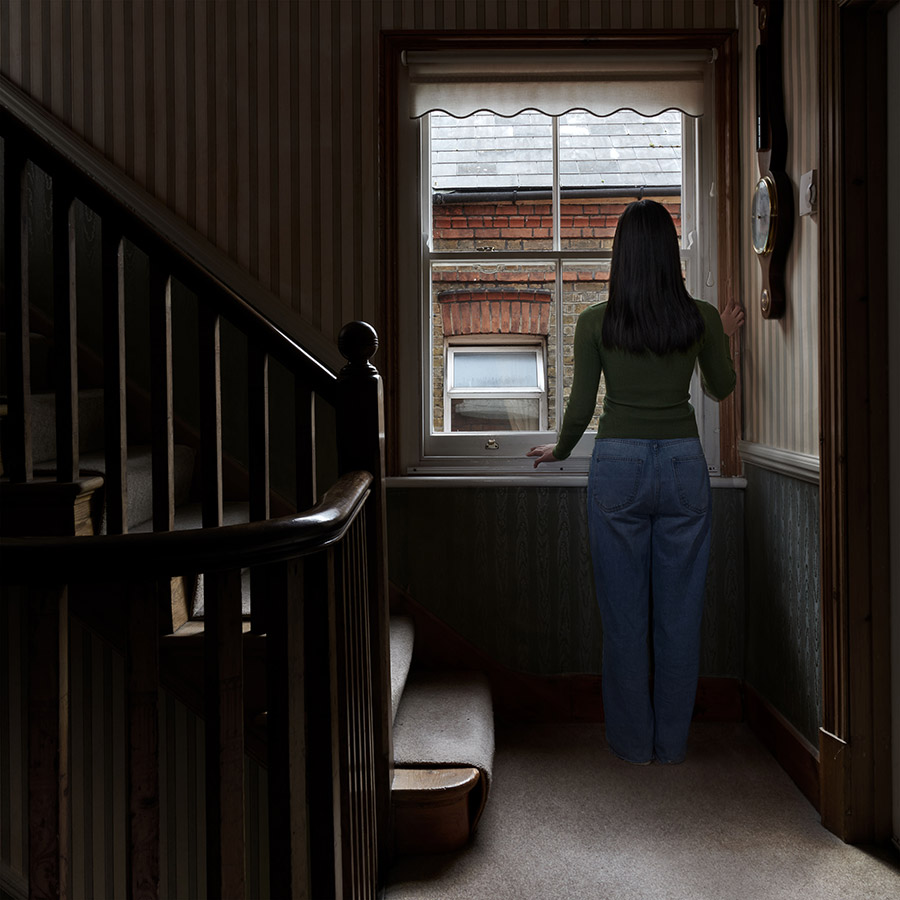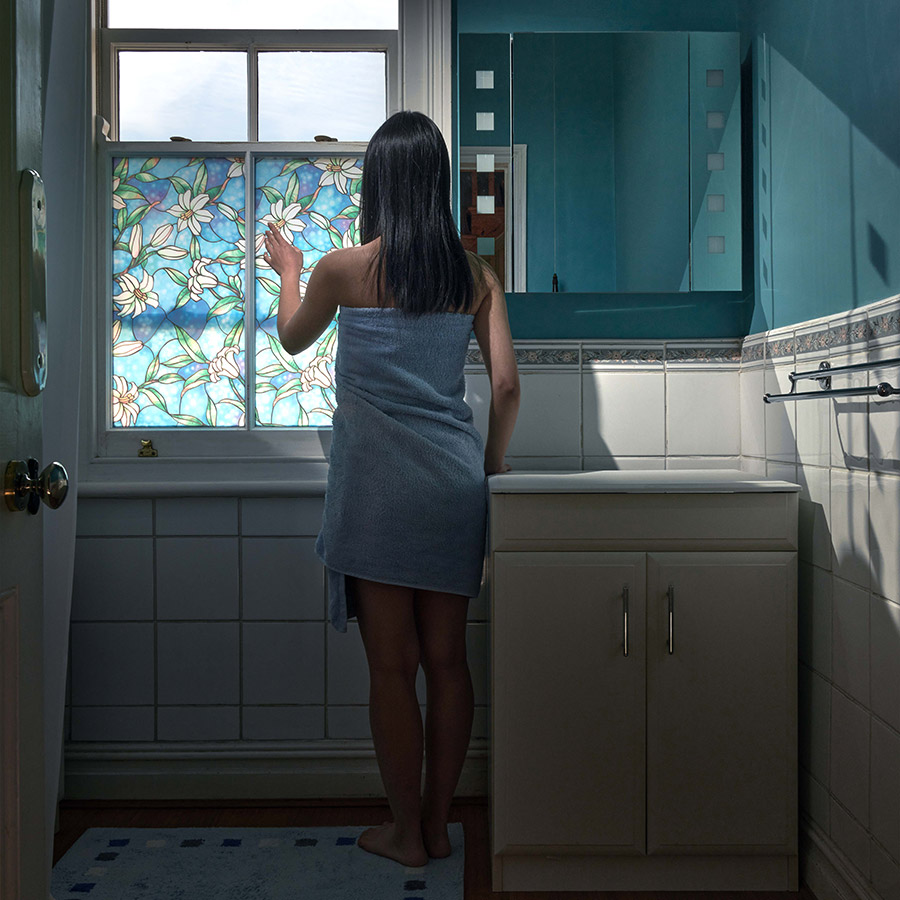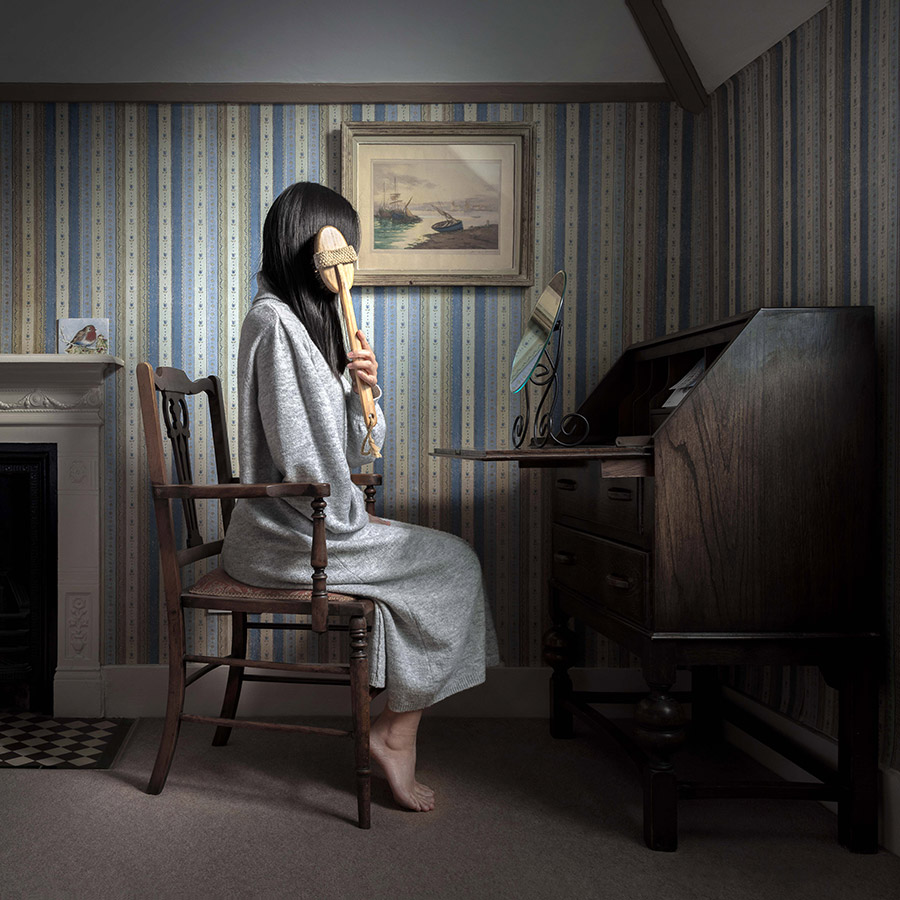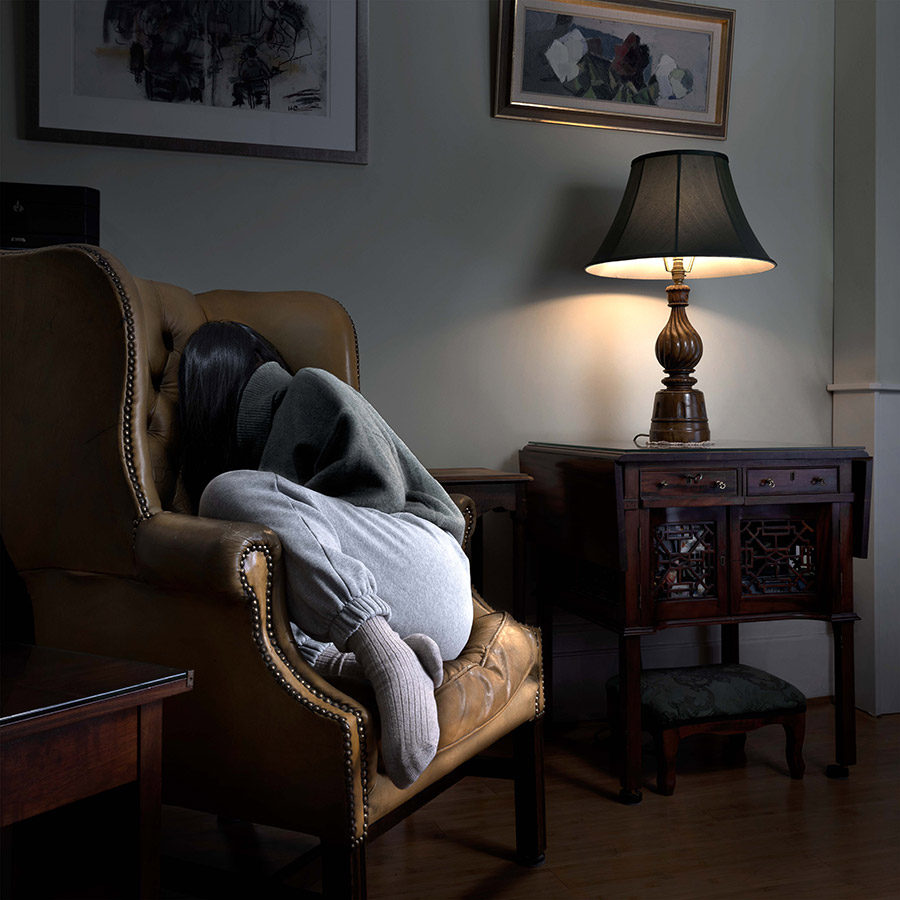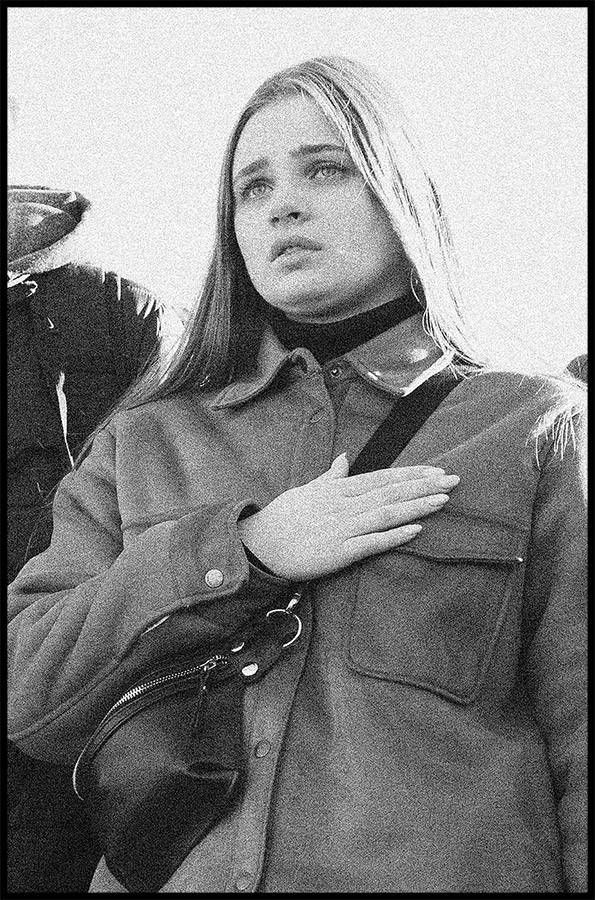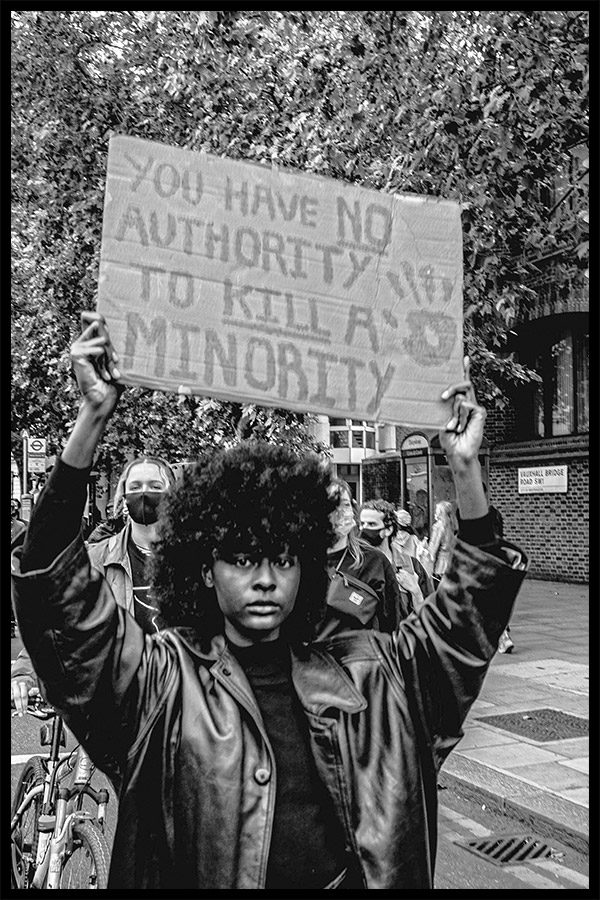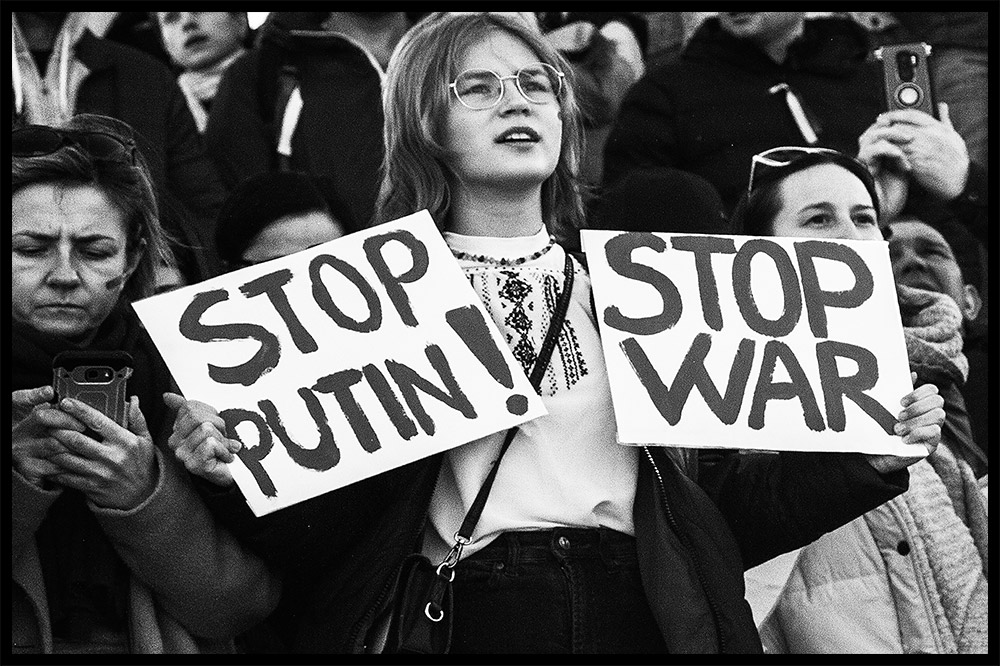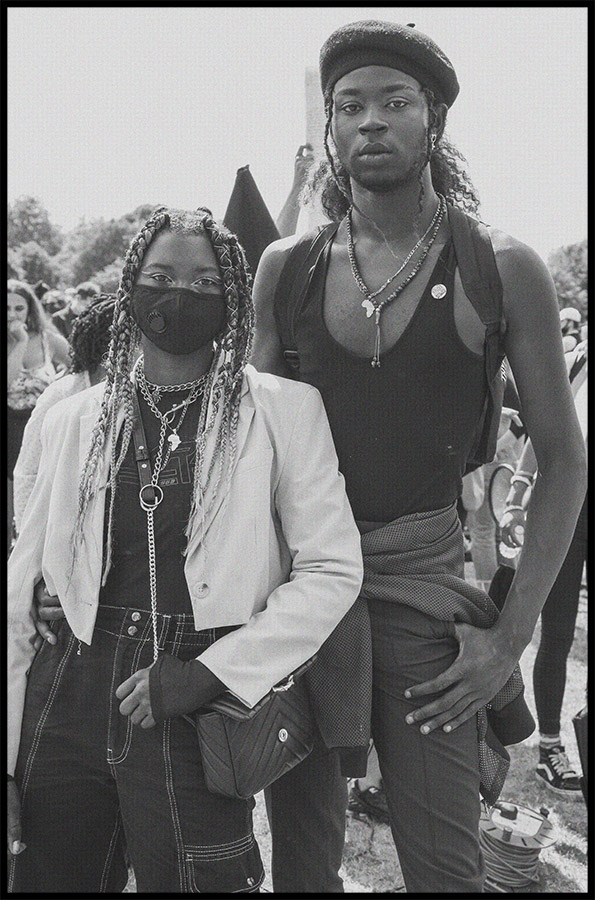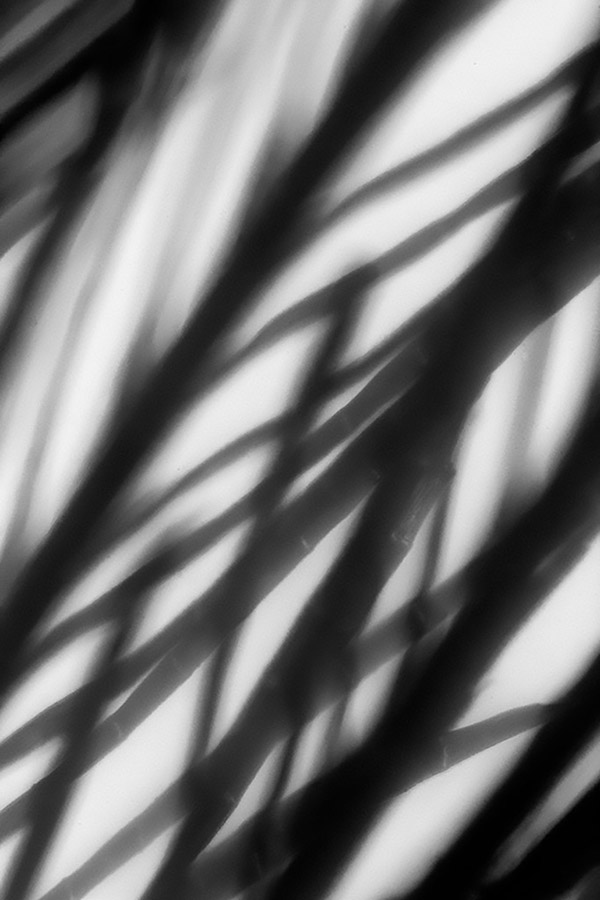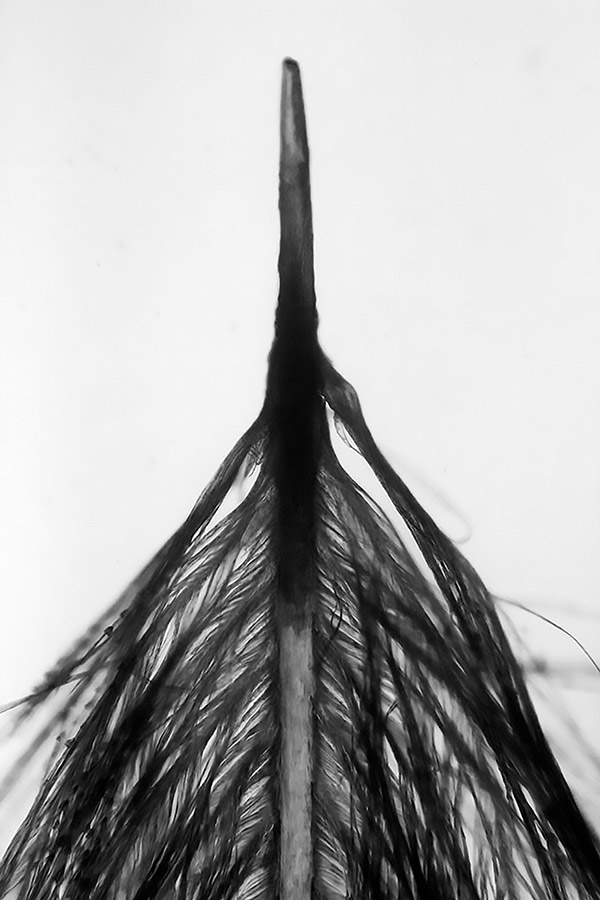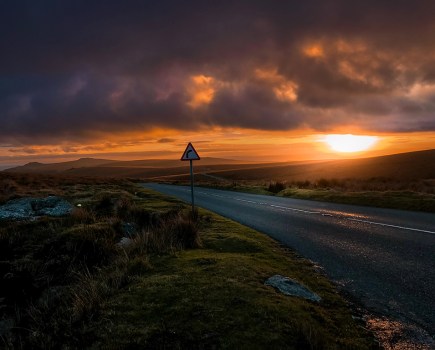Jessica Miller visits the graduate show by Final year BA (Hons) Photography students from University of Westminster. Below, the students share more about their projects and advice for those looking to get into photography.
University of Westminster (previously The Polytechnic Institution) was one of the first institutions in London to demonstrate the new invention of photography, and in 1841 the first photographic studio in Europe opened on the roof of the building. It was also the first establishment to offer degrees in Photography and Photographic Science, with the undergraduate photography course being the oldest degree course in Europe.
The projects within this 2022 graduate exhibition present resilience, creativity and imagination in presenting contemporary issues on both a individual and collective. Whilst their projects have been presented on the walls exhibition spaces, such as at the Truman Brewery for Free Range, many have also created photobooks.
I spoke with some of the Westminster photography students about their work, inspirations and future plans as they conclude their studies:
Ameesha Jeyam – See You Soon
Canon EOS 750D with either 50mm or 18-55mm lens for the self-portraits portraying my inner world and the iPhone XR or iPhone 11 pro for the day to day photographs depicting the outer world.
Can you tell me about yourself and your project?
I’m a BA photography graduate from the University of Westminster. Engaging with questions on identity and belonging through portraits of myself and others is something I am passionate about and usually what I tend to build my practice around. I believe everyone has a story to tell whether it be personal or general, it deserves to be heard.
See You Soon brings the motions and emotions of depression, loss and heartbreak in a diaristic manner through a classic photo book. My experience with depression and anxiety is something I have been ashamed to talk about. One of the most highly recommended remedies for dealing with my mental health issues was to keep a journal and do something I love, a seemingly simple thing to do for most but something I found mentally draining.
I was adamant that I could recover without the need to spell out my feelings by putting pen to paper, I quickly realised how fast my mental health was slipping. I made the decision to make journaling work for me by using photography instead of words. My book shows my personal journey over the last year, juggling issues with both romantic and family relationships.
I found peace in photography. The book includes three elements: my inside world and emotions depicted through self-portraits, my outside world during the turbulence with simple photographs taken day to day on my iPhone and finally, the communicative aspects of the journey where personal text messages from the past and notifications from a self help app are included.
How did you select the photographs for your show?
As I had designed a book for this project, there wasn’t specifically a limit on how many photographs I would use as I could continue to add as many pages as I deemed necessary. However, my book had gone through multiple trials and errors where I was at first lost on how to really depict my emotions accurately with just photographs.
In the beginning, I was creating staged photographs of locations, objects and myself whilst also just taking random photographs on my phone day to day whenever I felt something had sparked an emotion in me. Whilst I was thinking these staged, heavily equipped photographs were going to be the perfect shots for my book, I had realised that these images on my phone were much more intimate and aligned with the narrative for my book. It is always difficult to select the perfect images, but I believe if you are able to feel an image as well as you can see it, those are the best ones.
What are your future plans?
I always used to fear this question as I never really made a definitive plan to follow. Luckily photography allows me the freedom to adapt my future plans. Initially, I had planned to take a well-deserved break from photography after university as, I’m sure other graduates know, it can be a draining 3 years.
However, I have been lucky to have been awarded the BA Photography Graduate Award which has opened me to more opportunities from galleries and programmes. Being presented with this opportunity has given me the ability to develop one of my most passionate projects, an exploration of my roots and the history of the genocide in Sri Lanka.
This will be a very personal project that sheds light on the effects of war on several generations. With these new pursuits, I have been able to think more clearly about my future plans and that is to continue to develop all current projects and begin new ones that could be emotive or knowledgeable to myself and others. I am excited and honoured to be in a position to tell personal stories through my work.
Do you have any advice for others wanting to get into or study photography?
- There is the obvious advice about getting a good camera or finding good inspiration but my personal advice would be to never shy away from being your most authentic self when producing work. When I had started this project, it felt so intimate. I had felt so insecure and scared to let anyone see my most vulnerable self but once I overcame that initial hurdle, I was able to create something that not only helped me but also something that resonated with others. It has now given me new opportunities that may not have come forth if I had continued to shy away.
- Ultimately, the art of photography is absolutely whatever you want it to be. Explore all genres of photography, don’t feel you must stick to one style because the more you explore, the more you learn and the more you learn and gain that practice, the more confident you would feel in your work.
Is there anything else you would like to tell us?
I titled my book, See You Soon, similar to the quote “Its not goodbye, it’s see you later” I had heard several times in books, movies and music and it really resonated to me in a sense that the ending is never permanent and another chance will rise. It is to say that I will eventually see my happier, healed self and I travel with you as the viewer in this journey I documented within this book.
I intend to represent this as a process, one that I will continue to work through so it doesn’t particularly have an ‘end of story’ but at least it brings thought and awareness. I aim to encourage empathy and self-reflection. I want to share the importance of self-love and strong relationships with yourself as with others.
György Englert – Prologue to a Tango
At the beginning, I started to take pictures both with a Mamiya RB67 Pro SD, medium format film camera with a Sekor 50mm, f4.5 lens, using Fuji Provia slide film, and a full frame Nikon D850 DSLR camera with a Nikkor AF-S 28-300mm f3.5-5.6G ED lens.
I realised that, due to the time constrain, the Nikon D850 would provide me an incomparable efficiency without losing significantly on quality of the final images. For lighting, in different combinations, beside the ambient light, I used Profoto B1X 500 AirTTL Location Kit, Interfit LM8 100W LED Monolight Softbox Twin-Kit, a Godox V1 speedlight, a 90x120cm soft box, and a Sekonic L-608 light meter.
Can you tell me about yourself and your project?
I was born in Hungary and came over to London for the summer in 2012. I found much more here than I expected and thought to stay a little bit more to fulfil my curiosity. I obviously miscalculated the time span, as I am still here. To make my ends meet I picked up a retail job and used the money to travel. My camera would always be on my shoulder but only used it to make memories.
After a few years, when it was time to decide what to do in long term, I decided to transform my passion into a profession and enrolled to the BA Photography course at the University of Westminster, as a part timer, where I have just graduated with First Class Honours.
For my major project, I wanted to make something personal that I have never really done before. All the project based assignments at the university I treated as a task to (re)solve using creativity that is based on a solid concept. This time, I wanted to choose a topic that bothers me, something that is challenging to visualise, and needs technical skills.
Personal relationships have been a source of tremendous amount of works in different genres in art history. A never ending story that has countless layers, therefore always tells us something about humanity in general, and one can always connect to it through her/his personal experiences.
My series, Prologue to a Tango, originates from the moments of my relationship(s) when I perceive a harshly changed atmosphere in the interactions and feel hard to respond to it.
I connect these situations to certain scenes that cause confusion in me. Usually, these starts with a silent act that can be either credible or obviously acted out. These moments also incorporate a sort of alienation and rejection in rather subtle ways. I find it frightening, sometimes amusing, or even both at the same time.
I perceive these moments as signs or messages I am expected to respond to and also decipher. A kind of call for action that will lunch a tango like interaction in which I am believed to put a certain level of effort and show a degree of commitment to be able to unfold the real meaning of the act. But I am usually stuck and would rather remain an outsider than a participant.
To realise my concept, first, I wrote down all my thoughts related to the idea. Then, after clarifying them, I broke down my feelings into elements to which I tried to adapt a visual concept. For example, alienation: body language and concealed face, observational view point: wide angle lens with deep depth of field and square image format, personal relationship: same model in a domestic environment, ambiguity: poses and creating atmosphere with lighting, credibility vs acting: the scenes are in a Victorian interior that could be seen either as a home or as a stage, etc.
How did you choose which photographs would be included in your show?
Originally, I produced twelve images for my major project but I took out two images from the series for the show. These two images fit my concept and show different aspects of my feelings, however, as they were taken in the garden of the Victorian house, they also widen the interpretational spectrum of the series that could break the strength of the, anyway, indoor images.
What are your future plans?
I have been replying to requests emerged from the degree show. I have been fortunate to be awarded third prize in the BOB Books Student award and my work has been picked by several industry professionals which opened new opportunities.
So I haven’t got any summer holidays planned right now! However, I hope that I will be able to make some short trips to countryside in the UK during the summer. Regarding to photography, I have a project – a black and white series – in mind that I would like to prepare both conceptually and visually, and take at least, test shots this year, while I will be trying to find opportunities in photography industry and leave retail for good.
Do you have any advice others wanting to get into or study photography?
- Being talented does not necessarily mean that one can be a professional. Strong resilience and business skills are equally essential to have if one would like to work as a photographer.
- As it is a highly competitive field, I would suggest enrolling on a course only if you are really committed or a course degree is a must in the desired field they would like to work later. A university course will help to develop and work with concepts, and seeing a body of work from a theoretical aspect.
- For the technical aspects, practically, everything is available on the internet for free.
- In terms of lighting, if natural light is not enticing enough then create one you would like with any lighting equipment. It is good to know that trial and error is a common practice, even at the highest level, and sometimes it is necessary to be bold and challenge yourselves. That will rapidly expand your understanding of light and will deliver a steep growth.
Sophie Allen – Rise: Freedom to Assemble
Can you tell me about yourself and your project?
I grew up in Hull, Yorkshire but I have been based in London for over 10 years now. I moved down to London to pursue a career in modelling- which I did for over 11 years. I enjoyed being in front of the camera and I think this has helped me become the photographer I am today.
Growing up I would be the person in my friendship group with a camera around my neck that would document every moment- big or small. I realised early on my brain worked differently from others and it wasn’t until recently that I was diagnosed with ADHD amongst other things. I find that photography helps me to express myself when other conventional ways fail.
On walks I find myself viewing the world through a viewfinder constantly- my eyes dart from side to side scanning for what would be a great photograph. I have a real passion for street and documentary photography. People in their natural habitat rather then posed beauty. A few years ago I had a bad experience when shooting street photography in Paris. I took a photo of a man on my film camera as he walked past me and he wasn’t best pleased.
He tried to rip my camera off my neck and became aggressive and told me to delete it. This knocked my confidence and I stopped taking street photographs for a while until recently when I started photographing protests. I wanted to change my approach in how I shot so I decided to start stopping people and asking their permission before taking their photograph. I thought this would loose the authenticity of my photographs but instead it built up a connection between me and the subject and gives the viewer a glimpse into why people go to protest and fight for their rights.
At a time when the right to protest in the UK is uniquely under threat with the reading of the Crime and Policing Bill 2022, this series of photographs documents people speaking up for what they believe in at a particularly poignant moment in the history of assembly and protest. The bill considers restricting the volume, in decibels, of protests. However, protest is inherently a noisy act, and in the words of Anne McLaughlin MP, “the louder they shout, the more we listen”.
My intentions for this project were to photograph people protesting, from the likes of Black Lives Matter- which was sparked from the death of George Floyd by a police officer in the USA, to the anti-war protests sparked by the conflict in Ukraine, to Extinction Rebellion protesting the existential threat of climate breakdown.
When photographing the people at the protest I asked the subjects for their contact details this enabled me to later ask them for their permission if they were comfortable to be featured in my book or not. I also asked for a quote off them about why they were there. This helped personalise and bring the project to life.
These protests took place between May 2019 (pre-pandemic) and April 2022. The majority of the protests covered in this book happened throughout the pandemic, when concerns about infection and social distancing – even going outside – were contentious and for some, anxiety-inducing issues. However, despite these fears and at times increased legal restrictions, people still took to the streets. Systemic racism, war crime and ecological threats did not stop in the midst of a pandemic.
My project looks at the next generation of youth, as well as a mixture of ages in amongst different protests that are happening. I have a strong passion in photographing activism – seeing people come together in solidarity to fight for what is right and for a better world. I wanted to document these moments in history, to spread awareness and be part of making a change rather than just being a bystander.
While all these protests covered varied subject matter and issues, a common strength of emotion comes through in this set of photographs designed to be viewed together. The full range of human emotion is here – feelings of despair, disbelief, anger, camaraderie and hope for change. Such emotion needs to be voiced and voiced at volume.
I won first prize in the BOB Books Student award for my book which I was really pleased about. This will help me print further copies of my book. My book is not published but it would be amazing if a publisher was interested one day.
My book is available for pre-order now. If you’re interested in buying a copy email me on- [email protected]
How did you choose which photographs would be included in the show
To be honest I found it hard to select which photographs I wanted from my book onto the wall. This was because I have many favourites but also because we did not get allocated our wall space until the day of the show so it was difficult to know the scale I was working towards. I decided to choose a mixture of photographs from all the different protests form my book but with the Black Lives Matter being the main focus.
What are your future plans?
Who knows what the future holds!? I have started shooting weddings and maternity but it would be interesting to see if I could continue and pursue a career more in protests/documentary/reportage style of photography as this is something I am passionate about capturing.
Do you have any advice for others wanting to get into or study photography?
- The best thing you can do is just get out there and take photographs.
- Always have your camera on you.
- Arrange test shoots with friends and assist.
- University is not for everyone.
Tessa Browne – Pillow Feathers and Dust
Canon DSLR mounted onto a microscope
Can you tell me about your project?
This project was largely influenced by the fascination of the microscope and being able to see what the naked eye is not capable of. The inspirations were pretty much everything in my personal vicinity, such as the feathers in my pillow, to the dust on the floor.
The process included a lot of slowing down and paying close attention to such minute things that might possibly be overlooked. I had to also make my own microscopic slides to use under the microscope with the objects I had collected. It was very physical and engaging, especially when it came to using and practicing with the microscope, something I was not very familiar with. So, a lot of practice and experimenting came with this project, making it a much more fun way explore the capabilities and barriers of the microscope.
How did you select the photographs for your show?
I began choosing my photographs based on how successful they were as a collective, not only to each other but to me, as this was the main theme of the project. How each photograph would work beside another to create a story in which some of the smallest things can be so beautiful if we look closely enough.
What are your future plans?
At the moment my plans are not set. I am unsure of what I want to continue with in the future, whether that be photography or something entirely different, so I am keeping an open mind and to not rush into it.
BA (Hons) Photography at University of Westminster
Find out more about studying the BA (Hons) Photography course at University of Westminster here.
Free Range shows
Free Range is a special project that started by the Truman Brewery in 2000, alongside Fashion East, the talent incubator for emerging designers. The project was started initially to give students from outside London, in areas where the creative community may not have been as strong, the opportunity for their work to be seen by the creative industry that was building in Shoreditch and to meet peers from across the UK.
Related reading:
Falmouth students share diverse techniques in Gweles exhibition
UWE students share first exhibition post-pandemic
University of Gloucestershire students share new perspectives at photojournalism show
Middleman: the degree show by University of Portsmouth


